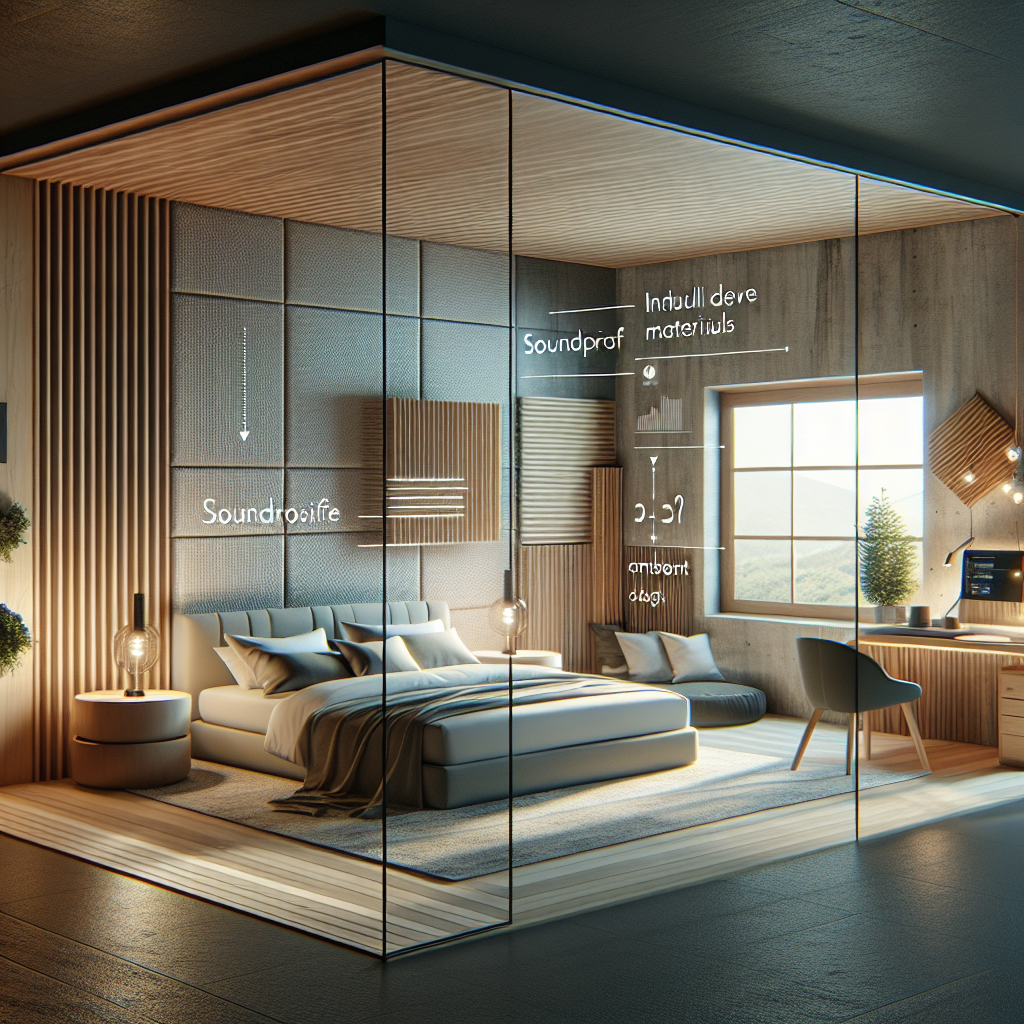Noise-Cancelling Architecture: Modern Bedroom Design
The Silent Revolution in Bedroom Design
In today’s fast-paced world, achieving quality sleep can be a challenge. One significant disruptor to a restful night’s sleep, often overlooked, is noise pollution. Sleep experts and architects alike are now shifting their focus toward solutions for mitigating noise disturbances at their very source. This innovative approach combines architectural ingenuity with sound-dampening technologies to create serene sanctuaries where uninterrupted rest reigns supreme.
The Link Between Noise and Sleep: Why It Matters
Research shows that exposure to even low levels of noise during sleep can lead to frequent awakenings, changes in sleep architecture, and heightened stress hormones. Addressing environmental noise through thoughtful architecture is a timely innovation.
Science-Backed Benefits of Noise-Cancelling Bedroom Design
Scientific studies have consistently reinforced the link between a quieter sleep environment and improved sleep quality. Exposure to environmental noise, even at levels below 40 decibels, can cause fragmented sleep and delayed sleep onset.
Key Features of Noise-Cancelling Bedroom Design
Dense materials like concrete and brick have long been preferred for soundproofing. Double-glazed or triple-glazed windows can reduce external noise infiltrations by up to 75%. High-density fiberglass panels and spray foam insulation excel in absorbing sound vibrations.
The Role of Technology in Noise-Cancelling Spaces
Emerging technologies like “smart walls,” embedded with sound-trapping nano-materials, are on the rise. Nanotechnology-based soundproofing materials are predicted to significantly slash noise exposure in homes.
The Multi-Generational Benefits of Noise-Cancelling Architecture
Noise-cancelling architecture offers benefits across all age groups, from supporting children’s memory and learning to enhancing cognitive processes and memory conservation for older adults, and minimizing chronic stress risks for high-stress professionals.
Conclusion: A Blueprint for Sound Sleep
Noise-cancelling architecture is a groundbreaking response to one of sleep’s greatest adversaries—environmental noise. By integrating scientific research and advanced materials into modern bedroom designs, architects are unlocking the potential for deeper, uninterrupted sleep cycles and better overall well-being.
Summary:
Noise-cancelling architecture combines innovative design and sound-dampening technologies to create serene bedrooms that promote better sleep hygiene and overall well-being. By addressing environmental noise, a significant disruptor to restful sleep, this approach offers multi-generational benefits, from supporting children’s learning to enhancing cognitive processes for older adults and reducing chronic stress for high-stress professionals.
References:
– [Environmental Research and Public Health, Impact of Environmental Noise on Sleep](https://www.mdpi.com/journal/ijerph)
– [International Archives of Occupational and Environmental Health, Effects of Noise on Health](https://doi.org/10.1007)
– [Acoustical Society of America, The Role of Acoustic Design](https://acousticalsociety.org)
– [Journal of Architectural Acoustics, Future Innovations in Soundproofing Technology](https://asa.scitation.org)
– [Building and Environment, Improving Indoor Quality with Insulation](https://doi.org/10.1016)

Dominic E. is a passionate filmmaker navigating the exciting intersection of art and science. By day, he delves into the complexities of the human body as a full-time medical writer, meticulously translating intricate medical concepts into accessible and engaging narratives. By night, he explores the boundless realm of cinematic storytelling, crafting narratives that evoke emotion and challenge perspectives.
Film Student and Full-time Medical Writer for ContentVendor.com




